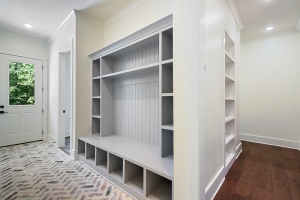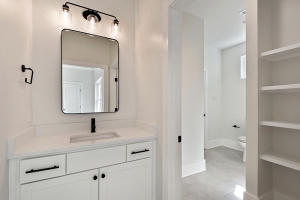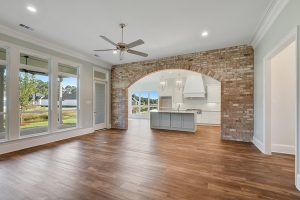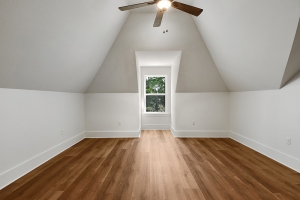The housing crash of 2008 was a devastation to the U.S. housing market. Currently, the economy is slightly taking a negative turn. The slowdown in the U.S. economy is having many homeowners concerned with the state of the market. Fortunately, data reveals that today’s slowdown is nothing like the crash in 2008. One of the biggest factors for it not to crash down is the low inventory supply which comes from current homeowners putting their homes on the market, newly built homes being listed and short sales or foreclosures. 
We're a Local St. Tammany Parish New Home Builder. This blog will share information about the real estate industry in the Greater New Orleans area and the Northshore of Lake Pontchartrain in particular. Stay tuned for local and industry news regarding new homes!
Friday, October 28, 2022
IS THE HOUSING MARKET HEADING FOR A CRASH
Monday, October 24, 2022
SINGLE-NEW FAMILY HOMES ARE BUILDING IN THE SMALLER MARKETS
According to the National Association of Home Builders (NAHB) Home Building Geography Index (HBGI) we are seeing a change in the locations of single-family home builds. The building activity in the last 30 months shows a decrease in building in metro areas, largely due to COVID, housing affordability and highly regulated markets.

“The geography of home building has shifted over the last two and a half years, with more single-family and multifamily construction occurring in lower-density markets. This shift was first caused by the initial impact of COVID shift continued in recent months due to housing affordability conditions that are causing both prospective renters and buyers to expand their geographic search for housing, aided by hybrid work patterns that allow for a combination of remote office work,” said NAHB Chief Economist Robert Dietz.
Another wrench in the system is the problem with getting building materials, construction labor shortages and and the Federal Reserve’s stingent monetary policy. “Looking at the last 12 months, single-family production has slowed in all regional submarkets, both large and small, due to ongoing building material production bottlenecks, construction labor shortages, and the Federal Reserve’s tigtening monetary policy,” said NAHB Chairman Jerry Konter, a home builder and developer from Savannah, Georgia.
The National Association of Home Builders Home Buidling Geography Index (HGBI) is a quartley measurement of building conditions across the country and uses county-level information about single-and-multifamily permits to gauge housing construction growth in various urban and rural geographies. The National Association of Home Builders tracks single-family and multifamily grow rates and market shares in all seven regions of the U.S. The HGBI takes the place of the of the Leading Market Index (LMI). The LMI would base their findings off single-family housing permits, employment, and home prices.
Currently it is report that the market share for single-family home builiding in large metro core and inner suburbs too a dive from 44.5% to 41.6% from the fourth quarter of 2019 to the second quarter of 2022. This shows the precovid vs postcovid figures, accounting for the results due to COVID. In the outer suburbs of large and medium metro areas has jumped up from 17.4% to 19% during the same time period as the decrease in the larger areas. The share also increased from 28.8% to 29% in the small metro core counties and in rural areas it rose from 9.4% to 10.4% This is mainly due to homebuyers wanting to move away from the dense areas during COVID.
Sunday, October 23, 2022
MAKING SURE YOU ARE IN GOOD STANDING BEFORE PREAPPROVAL
Preapproval for a home mortgage can be confusing, especially if you are a first-time homebuyer. Many homebuyers want to know if they are preapproval ready. In order to know, here are some things that lenders look for when preapproving someone for a home loan.

Mortgage pre-approval is not a mortgage pre-qualification. A preapproval is more in-depth than just answering a few questions from your lender. There is a lot of paperwork involved which includes employment verification, checking records, savings records and investment records. Lenders nationwide will like for the same elements when pre-approving for a loan. These include a minimum of two-year employment history in the same job or field, a credit score of 620 or higher, a savings track record, financial asses records, proof of down payment (3% to 20% of home price), and an all-in debt to income ratio fo 43% or less. The majority of lenders nationwide will not charge for a pre-approval, however, there are some out there that will ask for reimbursement to pull your credit report.
Your job and credit history play a big part in the pre-approval process. The two year employment rule is very strict. If you are a current graduate and can prove future income from your employer this will suffice, but if you change from W-2 pay stubs to self-employment this is a no go.
A credit score of at least 620 is also the rule of thumb. Before you go to a lender to get pre-approved, you can check your credit score for free through the credit unions. In today’s market, the loan approval for credit scores is every strict. For a mortgage, the middle score is what counts and is derived from all three of the provideers, TransUnion, Equifax, and Experian. If you and your partner are purchasing the home together, the worst middle score of the two will be used to determine preapproval.
Another important factor is your assests and downpayments. “The ability to budget and save shows financial discipline,” says Staci Titsworth, a regional manager for PNC Mortgage in Pittsburgh. If you received a big bonus, or an intertance, the lender will also have to show the underwriter where the money came from and that it is not borrowed. Lenders know that life is not perfect and there will be bumps in the road. Examples include job loss, job changes, and unexpected expenses. For many of these reasons, people have to dip into their savings to cover these unexpected expenses. In a nutshell you want to be able to have enough info for the lender to explain to the underwriter your financial ability to repay a loan.
Your debt and income ratio is also very important aspect of the process. Lenders desire to see a debt-to-income rati of 43% or less. If you make $10,000 a month gross before takes, and $4,300 of it goes towards your debt you are okay. This needs to include you future house payment, monthly property taxes and homeowners’ insurance. There is some room to negotiate when it comes to this. Let’s say your DTI is 46% but you have a great credit score and 5% in the bank for a downpayment. More than likely most lenders would approve you.
Starting the process early is a good idea in case you need to work on some areas to help with your credit, this will give you time to do so. If you are going to purchase within the next year, then you will want to start looking at getting preapproved now. Note that preapprovals usually are only valid for 60 to 90 days but can be extended if you keep updating with your current financial situation.
If you are in the market to purchase a home, remember to use both a real estate agent and a lender who can help you with all your homebuying needs. Going to see a home with a preapproval in hand will show that you are a serious buyer.
THE HOMEWOOD SUITES IN COVINGTON WILL BE CONVERTED TO AN APARTMENT COMPLEX
The former Hilton Homewood Suites located in Covington will be turned into an apartment complex called the Fairlane and the rent at the Fairlane will start around $900 a month. This is according to Zachary Kupperman who along with his partners purchased the property and plans to turn it into an 86-unit apartment complex.
